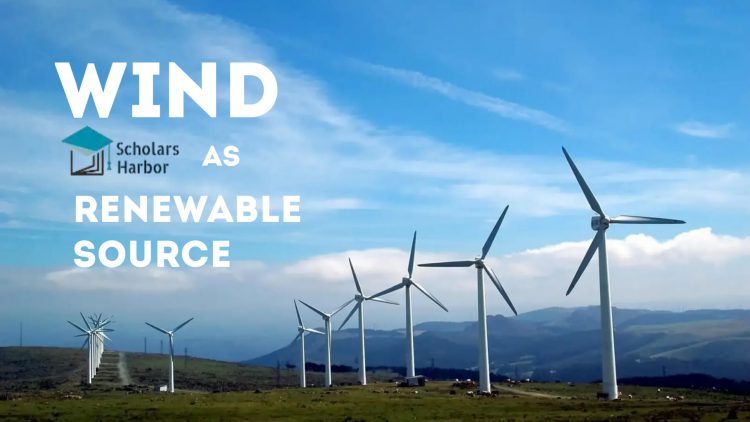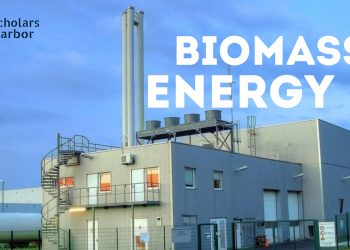In order to meet future global energy demands while reducing climate change and environmental pollution, renewable energy is likely to play a significant role. Despite the fact that global energy consumption is still increasing on average by over 2% per year, fossil fuels, which are well-known for their negative effects on the environment and weather, represent the majority of it (about 80%).
Many nations have set high strategic goals for renewable energies with low greenhouse gas and pollutant emissions. Wind has become the most widely used form of clean, renewable energy sources. The total installed wind energy capacity should significantly rise in the subsequent decades if such goals are to be achieved.
Global wind energy generation capacity is estimated to be 743 GW, according to the world Winds Report 2021. In every imaginable industry, wind energy is now widely used. As a result, small or micro wind turbine projects, especially in rural or urban areas, becoming more and more popular in addition to large-scale onshore & offshore Wind Turbine power plants.
Wind Energy Power Plants
Onshore & offshore wind turbine power facilities 2 different types of wind energy power plant. Onshore wind turbines are used on land, whilst offshore wind turbines are used on water. Even though both varieties serve the same job, they are physically different from one another. The wind is one factor that affects how much energy is produced. There is electricity when there is wind, and there is no electricity when there is no wind. This is the reason why professionals gather wind data over 4 to 6-years period before to building a power plant.
Onshore Power Plant
Onshore refers to a power plant that is situated on land. Even if the wind is not as powerful as the sea wind, but it rotates the turbine blades & produce power easily. The wind power plants initially constructed on land, but when scientists analyzed the wind speed on the oceans, they began building them there to increase energy production.
Offshore Power Plant
Offshore power plants are those that are situated in water, particularly in seas. There, the wind tends to blow quite fast, allowing for the production of more energy than on the main land. In the past few years, a great deal of research has done to create this technology. Since there is a growing need for energy, the power plant needs to be exposed to as much wind as possible.
Wind Turbine
Wind turbines are devices that convert wind to energy. Particularly, they transform the wind kinetic energy into electrical energy. According to the direction of the rotating axis, there are basically 2 types of turbines: horizontal axis (HAWTs) & vertical axis wind turbines (VAWTs). Despite the market’s availability both commercialized HAWTs and VAWTs, HAWTs have been more prevalent in onshore & offshore operations over the past 30 years due to their technology developed, potential performances & lengthy history of operational success.
Vertical Axis Wind Turbines
VAWTs have a rotary axis that is perpendicular to the wind. They are typically found in urban and rural locations with moderate winds as small turbines. The benefit of the lift-based straight-type VAWTs is that they have simple, extruded blades, which results in lower manufacturing costs.
|
|
Pros |
Cons |
|
|
Ø Simple design Ø Lower cost Ø Lower noise Ø No need for a yaw mechanism Ø Fewer components & Less expensive Ø Less upkeep More freedom for the hydrodynamic motion Ø Easy access to drivetrain system
|
Ø Poor Cp Ø Poor self-starting ability Ø Fatigue & poor efficiency Ø Poor COP Ø Large weight Ø High torsional stress and inertia |
Horizontal Axis Wind Turbines
HAWTs have a rotational axis that is parallel to the wind. These technologies have been more developed & converged in terms of aerodynamic forms, design, operations & installation etc. The span wise distribution of turbine blades has shown to be non-uniform & twisted. In order to reduce the risk of stalling in severe winds, pitch control is utilized to adjust the angle of attacks.
|
|
Pros
|
Cons
|
|
|
Ø Horizontal Ø High Cp Ø Constant aerodynamic load Ø Self-starting ability Ø Excellent efficiency Ø Lightweight |
Ø Yaw system needed Ø Difficult profile Ø Expensive Ø Sound emission Ø Frequent maintenance is necessary |
Components of Wind Turbine
Components of a wind turbine are as follows:
Tower
There are numerous types of towers, including concrete, lattice, and tubular steel towers. In general, a turbine’s sensitivity to strong winds increases with heights. Because the wind gets stronger the further we are from the ground.
Foundation
The foundation maintains the turbine’s upright position. For several areas, the foundation is normally underground, with diameters ranging from 15 to 21 meters.
Blades
The majority of turbines have three blades, which are primarily made of fiber glass. Although turbine blade sizes vary, the average current land-based wind turbine has blades that are over 50 meters long.
Rotor Hub
Wind turbine’s primary shaft is connected to the rotor hub, which holds the blades in place. The hub, which is a large and weighty component of the wind turbine joins the blades to the main shaft, must resist all loads placed on it by the blades.
Nacelle
The box in the tower’s top is known as a nacelle. It shields two significant components from the outside elements: the gearbox and the generator.
Gear Box
The gearbox is another important component of the system. It is frequently used in wind turbines to increase speed.
Generator
A generator is the main part of the wind turbine that transforms the rotor’s mechanical energy into electrical energy.
Yaw Control System
In turbulent environments, a yaw mechanism is also required to ensure dynamic stability. Although expensive, this technology is necessary to ensure the turbine’s dynamic stability and safe operation regardless of wind speed & turbulent situations.
Anemometer
A device that is used to detect the wind direction and speed is an anemometer.
Cite this Article
| Author: | Scholars Harbor |
| Year: | 2022 |
| Title | Wind as a Renewable Source – Fundamentals of Wind Turbine |
| Publisher: | Scholars Harbor |
| URL: | https://scholarsharbor.com/wind-as-a-renewable-source-fundamentals-of-wind-turbine/ |











Discussion about this post